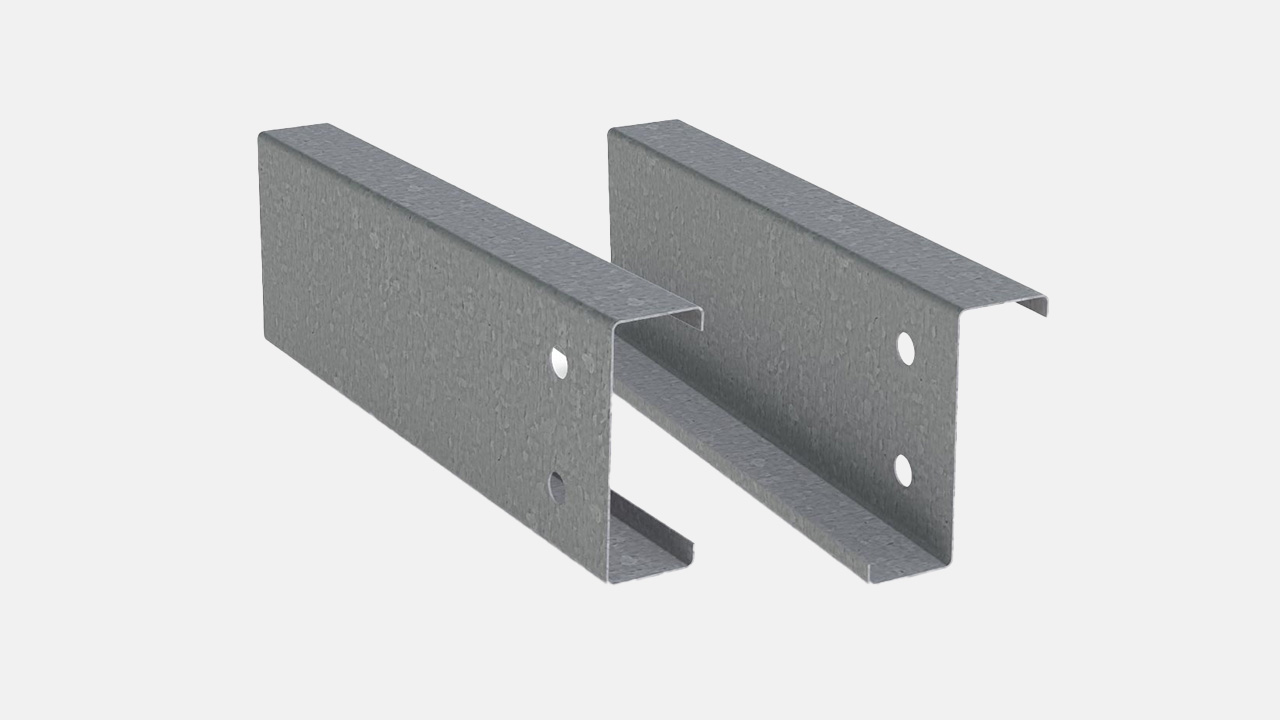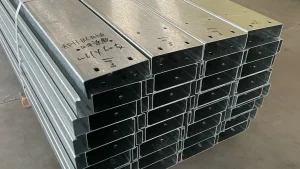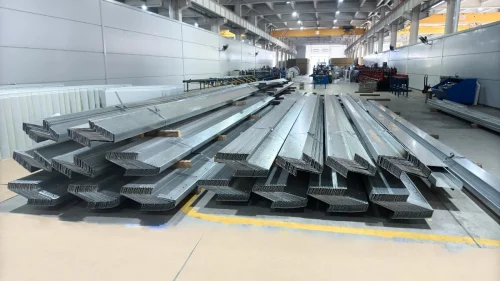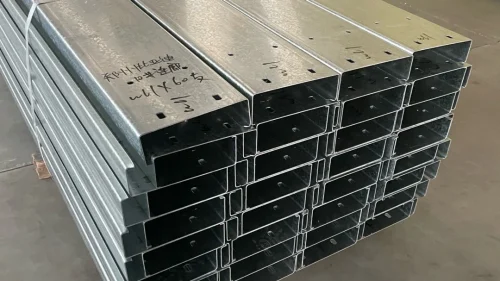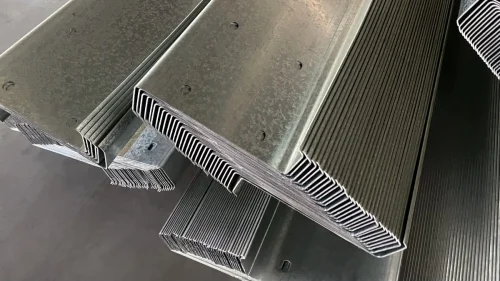Cold-rolled C/Z Type Purlins
Cold-rolled C/Z Type Purlins are secondary structural member with a “C”-shaped cross-section, commonly used to support roof and wall cladding in steel buildings.
They are produced by cold roll-forming galvanized steel coils at room temperature, which increases steel strength while maintaining precise dimensional accuracy.
C purlins are simple, economical, and widely used where single-span or non-overlapping applications are suitable.
A cold-rolled Z purlin is a secondary structural member used in steel building systems to support roof or wall cladding. It has a “Z” shaped cross-section, which allows it to overlap with adjacent members for continuous spans, increasing structural strength and reducing deflection.
These purlins are manufactured by cold-forming galvanized steel coils into the Z-profile at ambient temperature, which increases tensile strength without additional heat treatment. They are lightweight, cost-effective, and highly versatile in steel construction.
Common Specifications
-
Material:
-
Galvanized steel coil (ASTM A653, Q235, Q355, S350GD, etc.)
-
Yield strength: 250–550 MPa
-
-
Dimensions:
-
Depth (web height): 80–300 mm
-
Flange width: 40–80 mm
-
Lip size: 15–25 mm
-
Thickness: 1.5–3.0 mm
-
-
Length:
-
Cut to project requirements, usually up to 12 meters per piece.
-
-
Coating:
-
Zinc coating: Z180, Z275, or higher for corrosive environments.
-
Optional pre-painted or powder-coated finish.
-
Applications
-
Roof purlins: Supporting corrugated or sandwich panel roofing.
-
Wall girts: Holding vertical or horizontal wall cladding.
-
Floor joists: In light steel flooring systems.
-
Framing for sheds, canopies, garages, warehouses.
C Purlin vs. Z Purlin
|
Feature |
C Purlin |
Z Purlin |
|---|---|---|
|
Overlap |
Not ideal for overlapping |
Designed for overlapping |
|
Strength in Continuous Spans |
Lower |
Higher |
|
Best Use |
Single-span applications |
Continuous-span applications |
|
Installation |
Simpler |
More complex due to overlaps |
C Purlin
Z Purlin

Features And Benefits
OHC Steel Structure supplies cold-formed purlins and girts. The decision on which structural members to use will be based on the economy of each member, the roof and wall systems used, the product application, or by customer choice at the time of order entry.


